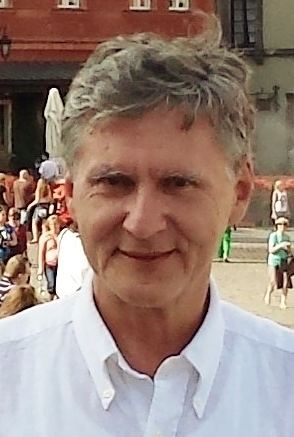Citizenship United States Residence New Jersey, United States Academic advisor Jacek Szymanowski | Doctoral advisor Jacek Szymanowski | |
 | ||
Fields Mathematical optimization Known for Stochastic programming, Risk-Averse Optimization Books Lectures on Stochastic Programming: Modeling and Theory, Nonlinear optimization People also search for Darinka Dentcheva, R. Tyrrell Rockafellar, Alexander Shapiro, Claude Greengard, Jacek Szymanowski | ||
Andrzej piotr ruszczy ski
Andrzej Piotr Ruszczyński (born July 29, 1951) is a Polish-American applied mathematician, noted for his contributions to mathematical optimization, in particular, stochastic programming and risk-averse optimization.
Contents
- Andrzej piotr ruszczy ski
- Schooling and positions
- Main achievements
- Selected books
- Most influential papers
- Chess composition
- References
Schooling and positions
Ruszczyński was born and educated in Poland. In 1969 he won the XX Polish Mathematical Olympiad. After graduating in 1974 with a master's degree from the Department of Electronics, Warsaw University of Technology, he joined the Institute of Automatic Control at this school. In 1977 he received his PhD degree for a dissertation on control of large-scale systems, and in 1983 Habilitation, for a dissertation on nonlinear stochastic programming. In 1992 the President of Poland, Lech Wałęsa, awarded Ruszczyński the state title of Professor. In 1984-86 Ruszczyński was a visiting scholar at the Institute for Operations Research, University of Zurich. In 1986-87 he was the Vice-Director of the Institute of Automatic Control, and in 1987-1990 he was the Vice-Dean of the Department of Electronics, Warsaw University of Technology. In 1992 Ruszczyński was a visiting professor at the Department of Operations Research, Princeton University, in 1992-96 he led the project Optimization under Uncertainty at the International Institute for Applied Systems Analysis, in 1996-97 he was a visiting professor at the Department of Industrial Engineering, University of Wisconsin-Madison, and since 1997 he has been with Rutgers University, where he holds a position of Distinguished Professor at the Rutgers Business School.
Main achievements
Ruszczyński developed decomposition methods for stochastic programming problems, the theory of stochastic dominance constraints (jointly with Darinka Dentcheva), contributed to the theory of coherent, conditional, and dynamic risk measures (jointly with Alexander Shapiro), and created the theory of Markov risk measures. He authored 5 books and more than 80 research papers.
Selected books
Most influential papers
Chess composition
Under the name Piotr, Ruszczyński is known as an author of chess problems holding the title of International Master of Chess Composition of FIDE (since 1988). 29 his problems of all genres were selected to FIDE Albums by the Permanent Commission of the FIDE for Chess Compositions.
To the left is one of early Ruszczyński's problems. The key 1. Qh6! threatens 2. Qf8 and 3. Qd6#. After 1 ... Ke6 white still plays 2. Qf8 Kxd7 3. Qe7#. The two main variations present the idea of half-pin: 1 ... f5 2. Rd5+ Ke6 3. exf5# (using the pinning of Pg5), and 1 ... g5 2. Re7+ Kd6 3. e5# (using the pinning of Pf5). All variations end with model mates; the main two variations have identical mate pictures on different squares.
To the right is one of Ruszczyński's best known strategic threemovers. The key is 1.Qf6! with the threat 2. fxg3+ Kxe1 3. Bd2#. In the two main variations, black Grimshaw intersection on the square c3 is exploited with anticipatory shut-offs from a white half battery. After 1. ... Bc3 white plays 2. Nc2! (threatening 3. Bd2#), and then 2. ... Bxf6 3. Be3# (using the anticipatory shutoff on c2), 2. ... Bxb2 3. Bxb2#, and 2. ... Be1 3. Ne3#. After 1. ... Rc3 white plays 2. Bd2! (threatening 3. Nc2#), and then 2. ... Rf3 3. Nd3# (using the anticipatory shutoff on d2), 2. ... Re3 3. fxe3#, and 2. ... Rc1 3. fxg3#.
With Jan Rusinek, Ruszczyński co-authored the book: 64 Polish Chess Compositions. Warszawa: Polski Związek Szachowy. 1989.
